The Intel Haswell Refresh Review: Core i7-4790, i5-4690 and i3-4360 Tested
by Ian Cutress on May 11, 2014 3:01 AM ESTSynthetic IGP Benchmarks
OpenCL – CompuBench: link
CompuBench is an OpenCL and RenderScript benchmark designed by Kishonti for both CPUs and any GPGPU capable device. While it offers almost two dozen tests, we select the more real-world tests in terms of fluid simulation and image analysis benchmarks and test on the CPU and IGP respectively. The CPU results are earlier in the review, and the IGP results are below.
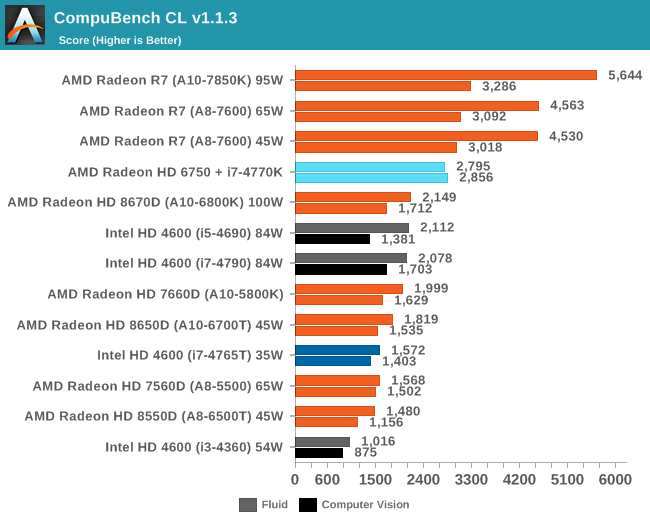
CompuBench responds well to actual cores, but not so much to threads, given by the close scores of the i5 and i7 CPUs. AMD still wins here.
Unity – Graphic Scene 720p: link
As part of my IGP testing I went searching for a couple of new Unity based benchmarks to help decipher the line between the desktop graphics solutions and those that are not so great. First up is a graphical humdinger, implementing a complex scene with lighting effects (including fluid simulation, shadows, SSAO, Bloom). We run the benchmark at 720p with the highest graphical settings, reporting the average FPS.
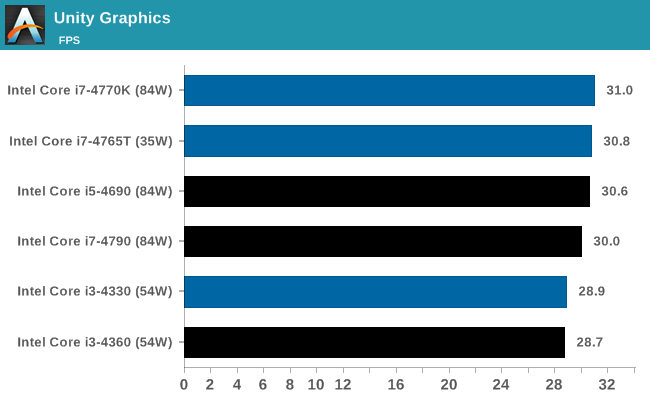
The HD 4600 seems relatively CPU agnostic for complex graphics in Unity. More GPU power seems needed.
Unity – Draw Calls: link
Next up is a benchmark limited by draw calls rather than rendering complexity. The scene generates simple Nintendo Gamecube polygons that fall due to gravity and bounce around until stationary. The scene continuously spews out these polygons until three consecutive frames fall under a 20 FPS average. We run the benchmark at 720p at simple graphic settings to minimize the graphical complexity, take the number of consoles that spawn from each run and average over several runs.
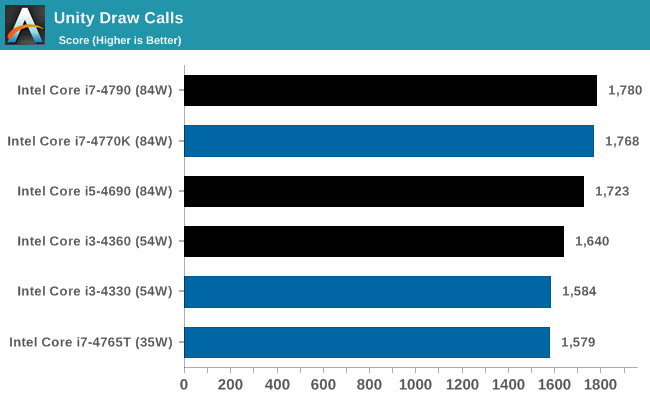
3DMark
The synthetic tools from Futuremark have been on the benchmarking landscape for over a decade, with each generation designed to tackle new problems as either the CPUs or GPUs become too powerful. Here we test 3DMark 06, 3DMark 11 (Performance) and the latest 3DMark.
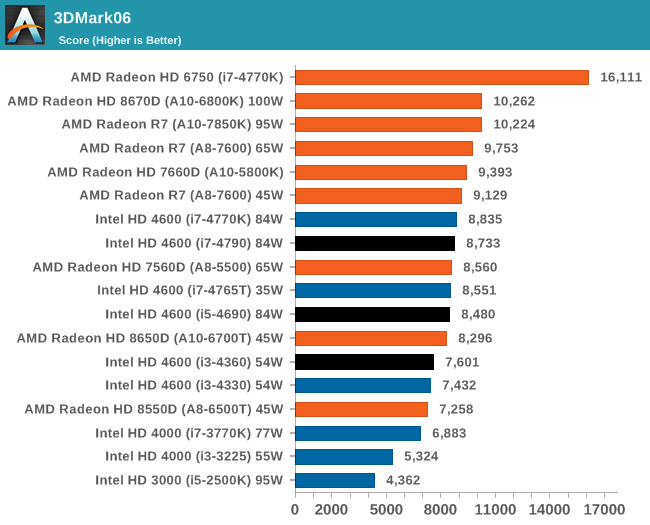
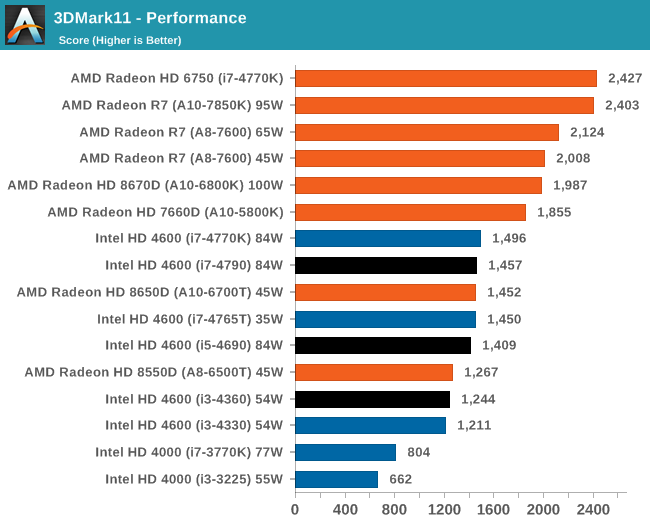
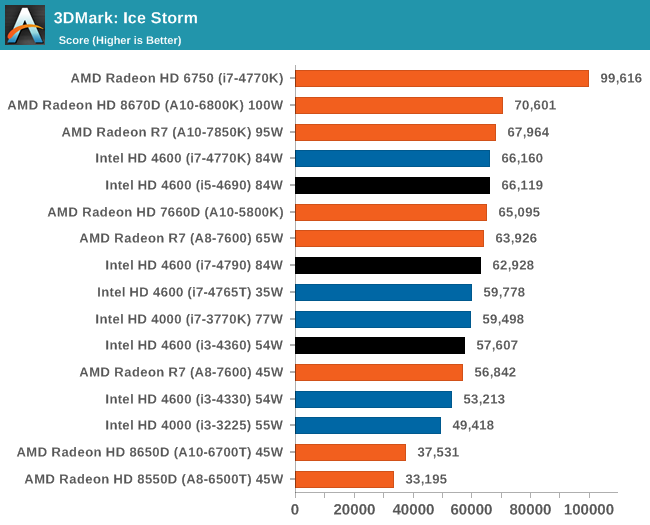
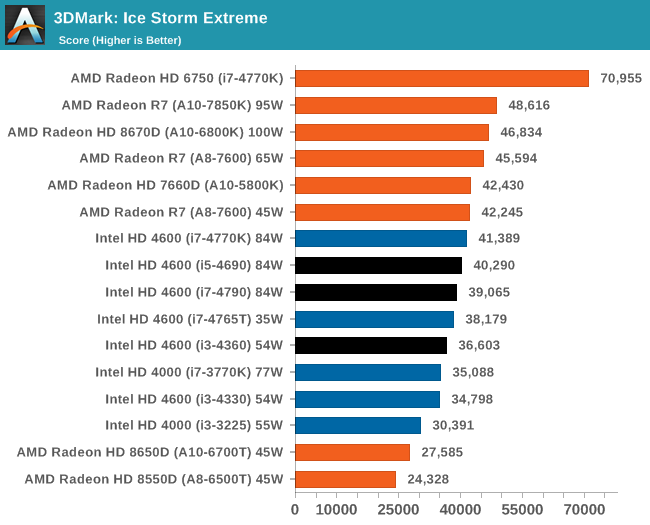
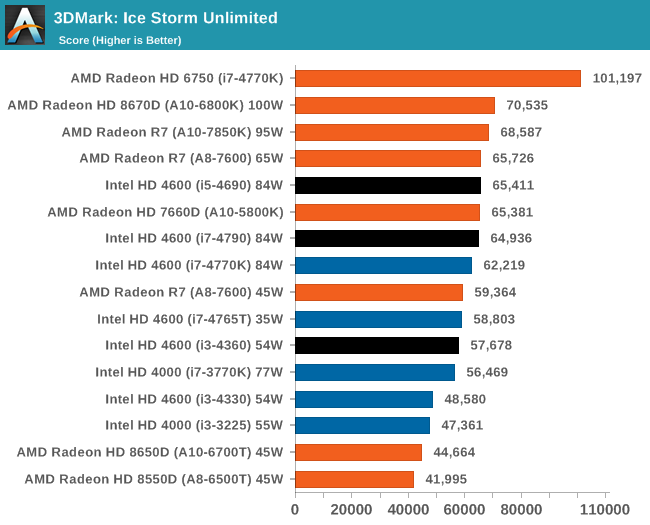

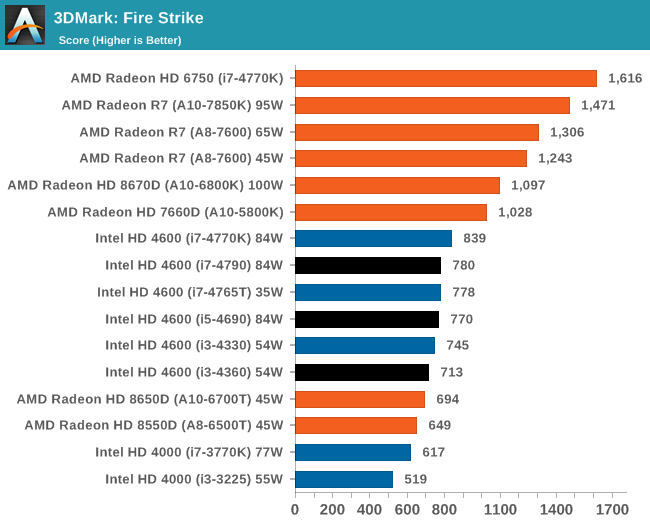
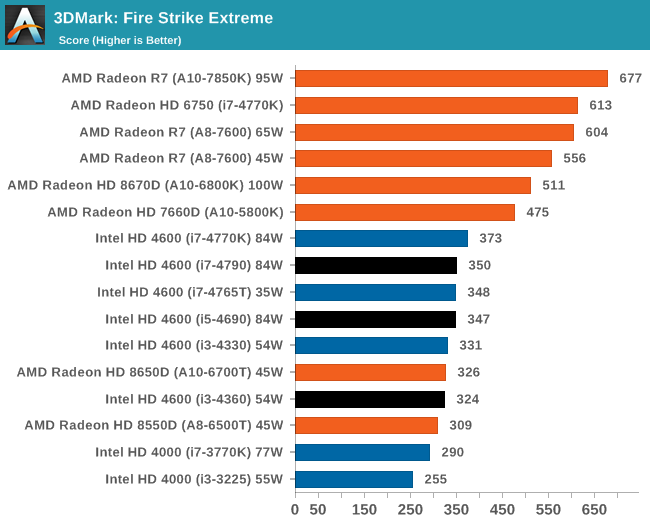
For CPU limited testing, such as Cloud Gate, the Intel i7 pulls ahead with the i5 quickly in tow. For the others, AMD has the lead.
Tessmark
The latest version of TessMark is designed to focus on tessellation via OpenGL 4. We run the latest version of the benchmark using the high resolution map set at maximum tessellation while 1080p full screen, reporting the average FPS.
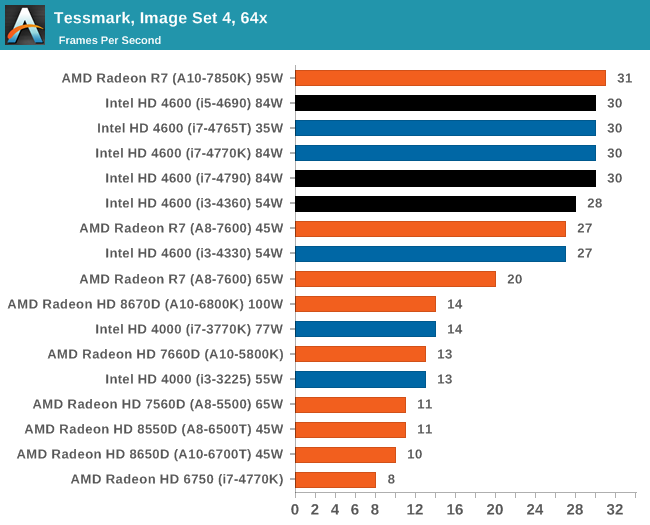










130 Comments
View All Comments
stephenbrooks - Saturday, May 24, 2014 - link
I guess in the event that desktops die, I could attach my two 23" screens, keyboard and mouse to a laptop dock instead, because that's more futuristic or something.mikato - Thursday, May 15, 2014 - link
"the limiting factor is the technology between the keyboard and the monitor: the user"Uhh, the user isn't between the keyboard and monitor. The user is on the end of a branch, past the keyboard. Maybe in the future... :)
jayshank7 - Thursday, May 15, 2014 - link
I bought 4770K 2 months back so won't be getting anything before 2016 to be honest.. i may build broadwell based i5 system but my main 4770K based rig would be here with 3 x 280X Toxic for those years..HardwareDufus - Sunday, May 18, 2014 - link
Looking forward to a Broadwell based I7-5790K with IrisPro (HD5200+)Krysto - Wednesday, May 21, 2014 - link
The only reason there's even a "Haswell Refresh" is because Intel blew it with Broadwell, and got delayed by a whole 6 months. In 2015 they will have most of their process advantage, and will be only 6 months ahead of TSMC, once it gets FinFET at 16nm, compared to IVB/Haswell/Silvermont where it had a generation/node and a half advantage.Be Careful - Friday, May 30, 2014 - link
Hey technology nuts I would like you to read this:http://www.jimstonefreelance.com/corevpro.html
deruberhanyok - Monday, June 2, 2014 - link
I might be late to the party, but, on page 9, the bioshock infinite benchmark charts - is the second one mislabeled? The minimum frame rates? It seems to be.duttasanjiv - Thursday, November 13, 2014 - link
Thx for the much elaborate review.I was looking for the Pure CPU performance of i5 4590 in Video encoding, and it unfortunately did not reveal much of the testing procedure. Kindly let us know-
1) What was the Handbrake source(UHD or DVD) & target (Full HD /half HD) frame size ?
2) What was the encoding speed settings (medium? slow?)
3) What was the CRF/ CQF used?
Most imnportantly (for me atleast :-) ) was a comparison in visible quality difference with pure CPU vs Haswell refresh applied. I heard that there is minor quality compromise with Haswell? Did they improve it with Haswell refresh??
GGuess - Saturday, December 6, 2014 - link
There should be a line of discussion of why haven't CPU speeds increased in the past 5years in a significant way. My 5yr old Intel I7 is a 4 core at 3GHz. The ones discussed here are only 6 or 8 cores and run stock in the mid-3 to 4GHz range. So over 5yrs, the CPU capability has not grown 2 to 3times faster, and that only applies to applications that can use the extra cores and hyper-threading. The usual rule we work to is that people won't even notice a 50% speed increase. It has to be 2 to 3 times before it is noticed. Previously, a 3year refresh of a computer resulted in a 5 to 10x computer speed increase.With the current barely noticeable 2x, why bother with the trouble of an upgrade? No wonder Intel's and AMD's sales figures are failing to grow.
johnny_boy - Friday, February 27, 2015 - link
Why are all the AMD chips APUs? Why not throw at least one top-end FX processor into the mix, like the very common FX-8350 which costs about as much as a 4360.